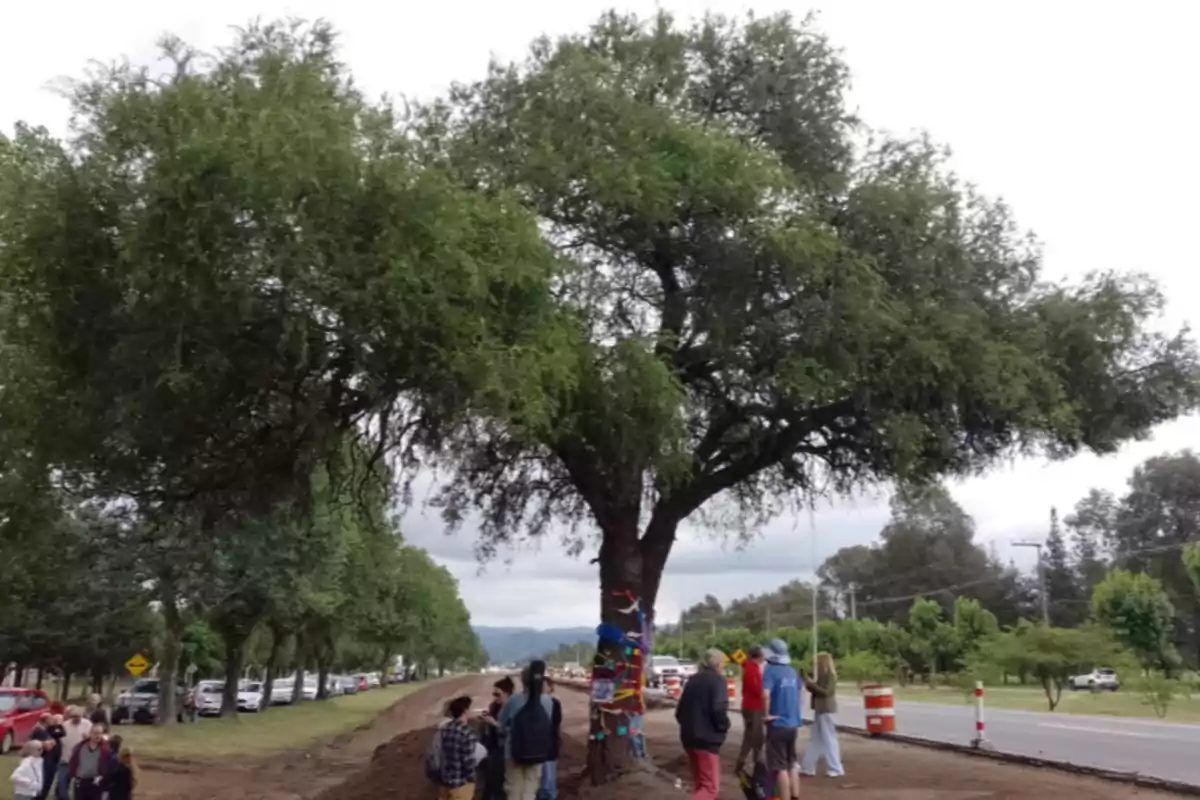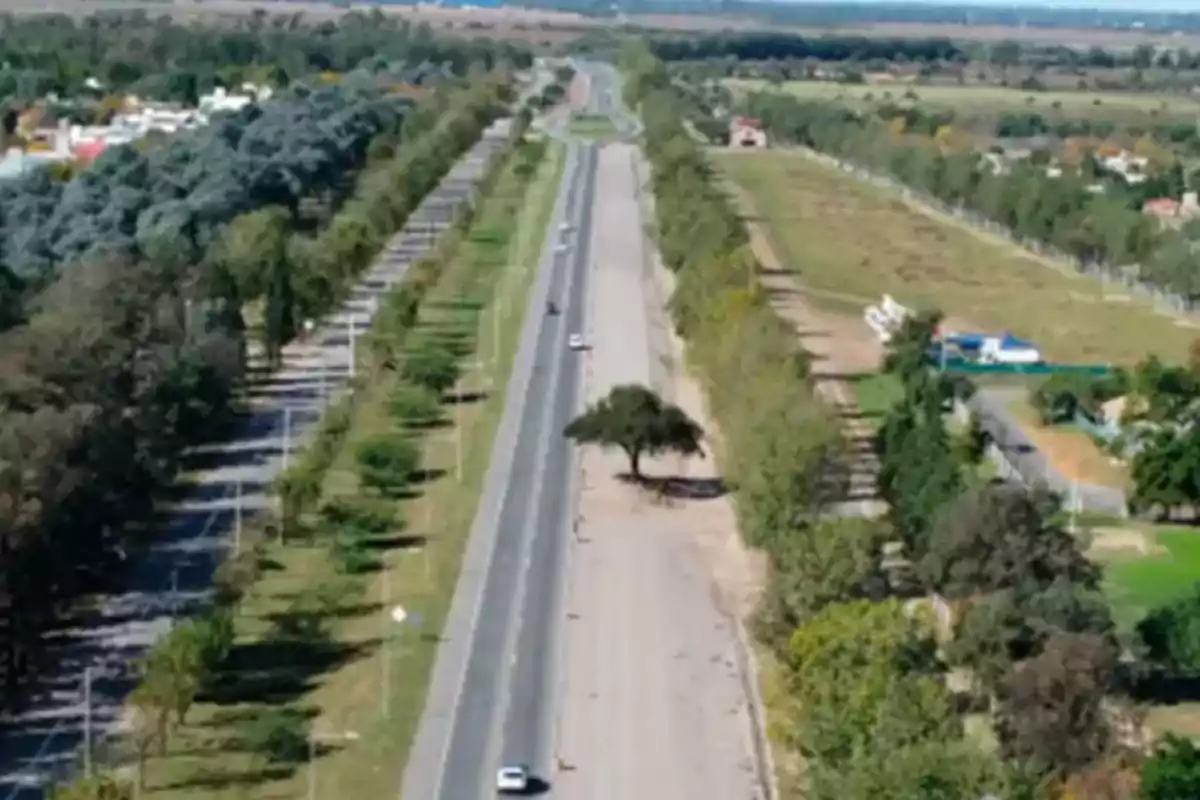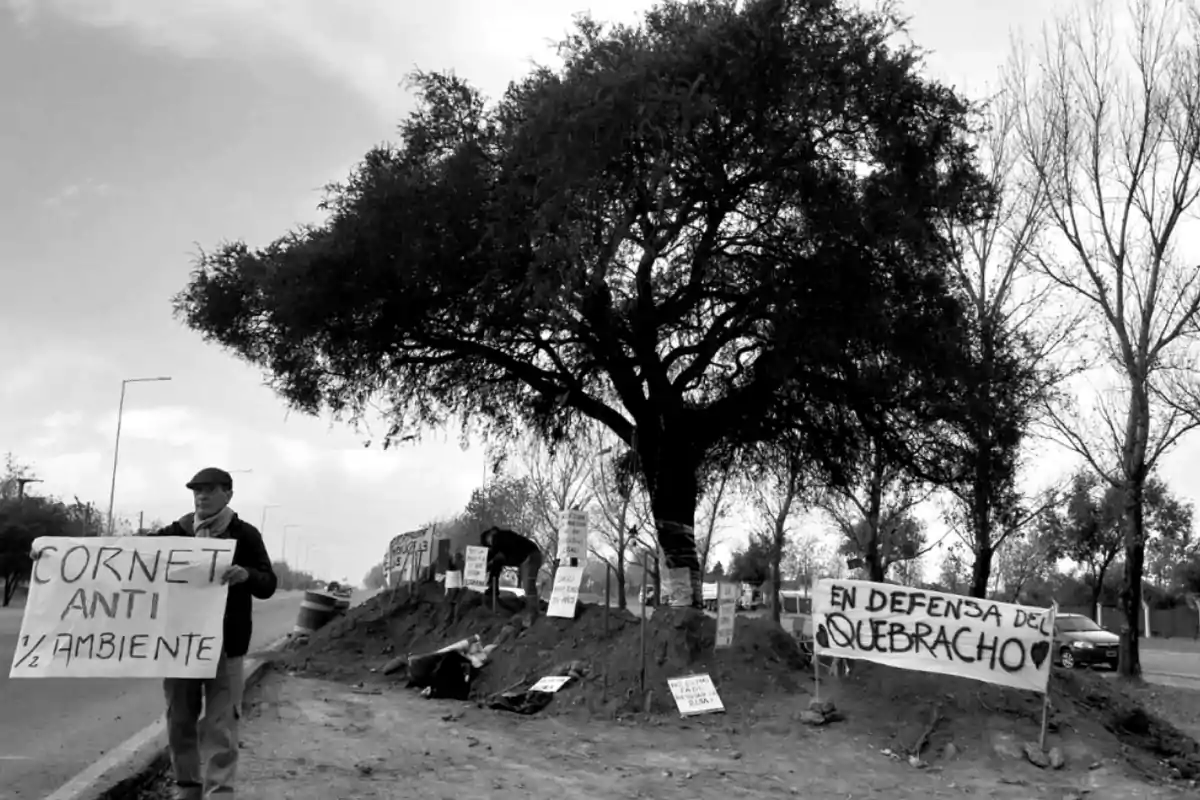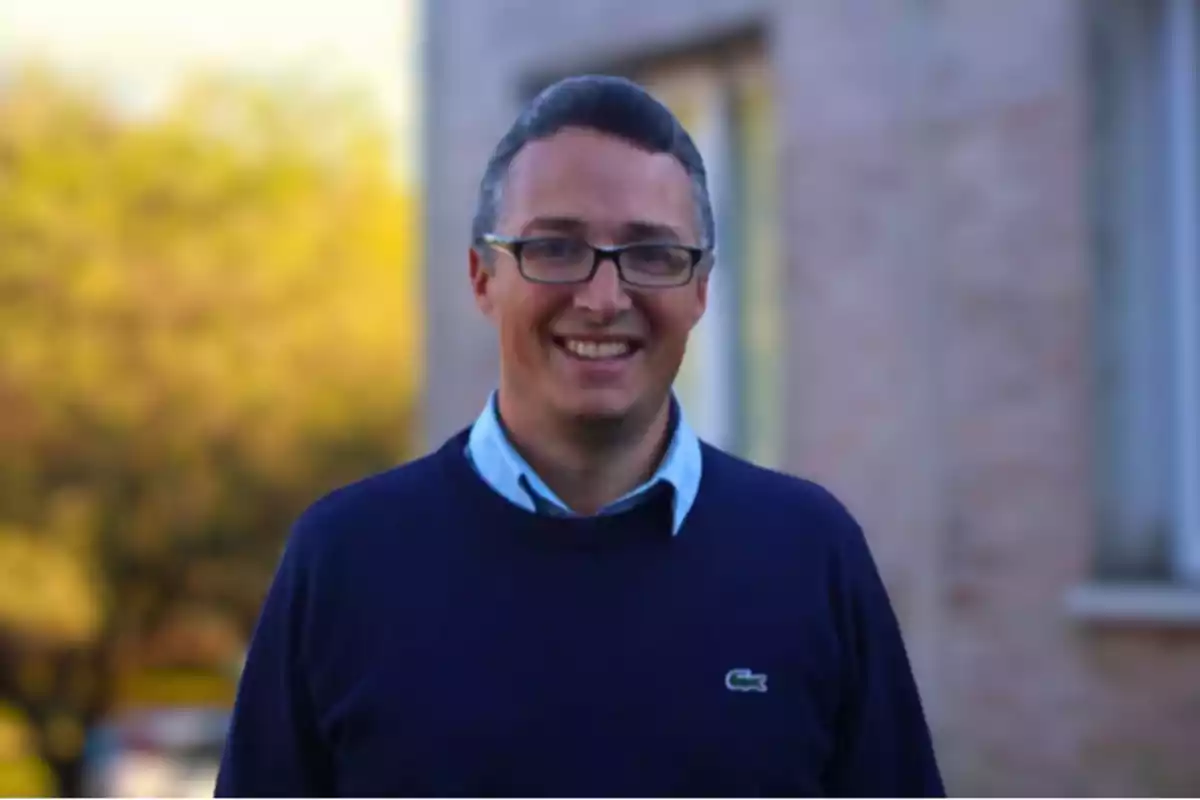
Villa Allende: the transfer of the white quebracho has been put on hold due to a lack of cranes
The Municipality keeps that if they do not manage to move the tree in the coming days, they will proceed with its definitive felling
The attempt to move the quebracho blanco from Padre Luchesse Avenue was interrupted on Wednesday night without achieving the objective. After more than twelve hours of work, the contracted crane was unable to move the specimen, which weighs about 30 metric tons (66,139 pounds). Now, the municipality must secure new equipment or decide on its removal.
According to Government Secretary Felipe Crespo, the relocation is complicated by the condition of the roots and the weight of the tree. The alternative being considered by the authorities is to continue in the coming days with another crane or proceed with the removal of the specimen. The original plan was to move it about 25 meters (82 feet) toward the south collector road.
The tree is located in the path of a road project that aims to widen the lanes of Padre Luchesse, a connection between Villa Allende and Córdoba. The company Caminos de las Sierras stated that it is not possible to modify the route without affecting other networks and infrastructure. The proposal to divert the route was rejected for technical and safety reasons.
The conflict has escalated in recent months and pits provincial and municipal authorities against residents and environmental organizations. The urgency to solve the tree's fate is increasing because its roots have already been exposed. This limits its ability to survive if the relocation doesn't take place.

A centennial tree in the middle of a road project
The specimen in question is approximately 283 years old and is part of the native forest that existed in the region before urban development. It is located on the shoulder of the avenue, near Cinco Ríos School, and has been identified as an environmental symbol by residents and environmentalists. Its location coincides with the intervention area of the road project funded with provincial funds.
Specialists estimate that the probability of it surviving after relocation is low, especially due to the time of year and current conditions. The municipality claims that technical measures have been taken to minimize risks. Nevertheless, social organizations report damage caused by previous works and a lack of planning.
The community proposed alternatives to preserve the tree without hindering the development of the project. Among them, they suggested a minor shift of the road route that would not compromise the avenue's functionality. The proposal was dismissed by Caminos de las Sierras in a letter sent to Mayor Pablo Cornet.
The dispute led residents and environmental groups to organize in defense of the tree. Groups such as "Vecinos en Defensa del Quebracho Blanco" and Fundación Mil Aves promoted public actions. Among their arguments, they highlight the historical, ecological, and symbolic value of the tree in the region.

Social mobilization and tensions with municipal management
Since November of last year, protests to prevent the removal of the specimen have multiplied. There have been festivals, marches, a sit-in, and even a caravan with more than 100 cars that toured the city. A campaign was also launched on Change.org that surpassed 10,000 signatures of support.
Among the direct actions taken by protesters, residents and activists chained themselves to the tree. One of these actions ended with the arrest of journalist Silvia Majul on June 24. The incident caused outrage and attracted the attention of public figures such as Ricardo Mollo and León Gieco.
Residents criticize the municipality for dismissing proposed solutions and not establishing an effective channel for dialogue. They also report that the execution of the project damaged the tree, including the breaking of roots and a water pipe. The criticism also points to alleged improvisation in the relocation operation.
The legal conflict has also had significant episodes. In May, an injunction filed by legislator Luciana Echevarría managed to temporarily halt progress. However, in June, the court declared the appeal inadmissible, which allowed work to resume.

The official stance on the delay and protests
Mayor Pablo Cornet stated that the municipality's intention remains to relocate the tree, not remove it. However, he warned that if they can't complete the move soon, they will have to opt for removal. "Either we do it quickly or it is no longer worth even attempting the relocation," he said.
Cornet explained that the company in charge of the operation withdrew due to the hostile environment at the site. "The pressure on the workers at the site, with people shouting insults and so on, led them to decide to withdraw the crane," he noted. He also referred to threats and public shaming received by the workers.
In recent hours, the municipality requested the intervention of the justice of the peace to try to solve the conflict. Cornet requested cooperation from the protesters to allow the work to proceed without interference. He warned that without such cooperation, they will have to choose the alternative they do not want.
As part of the environmental compensation plan, the mayor mentioned that 36 new quebracho trees have already been produced from the specimen's seeds. He also announced the planting of more than 2,000 trees in different parts of the city. Despite this, organizations insist that relocating the mother tree doesn't guarantee its survival.
More posts: